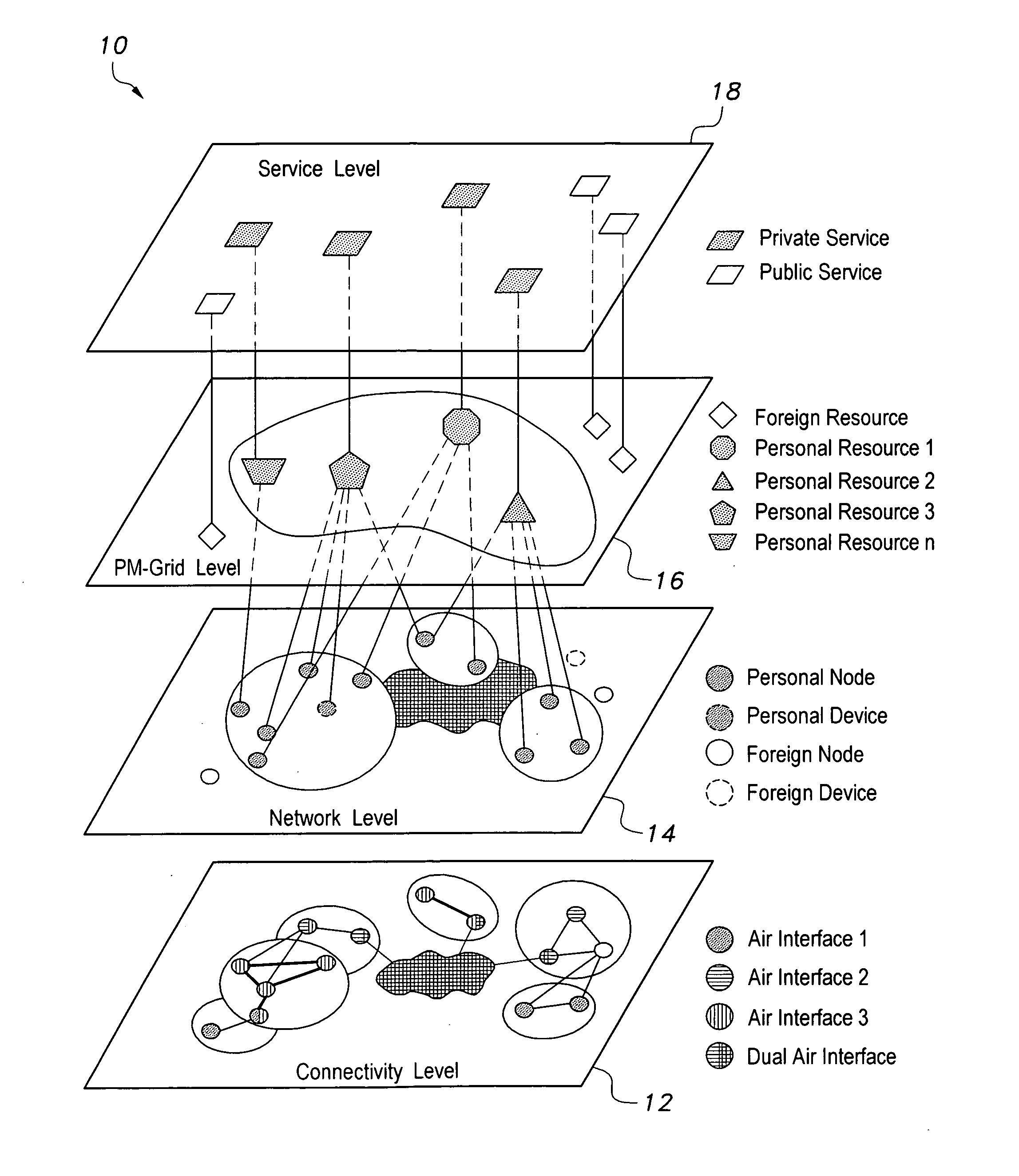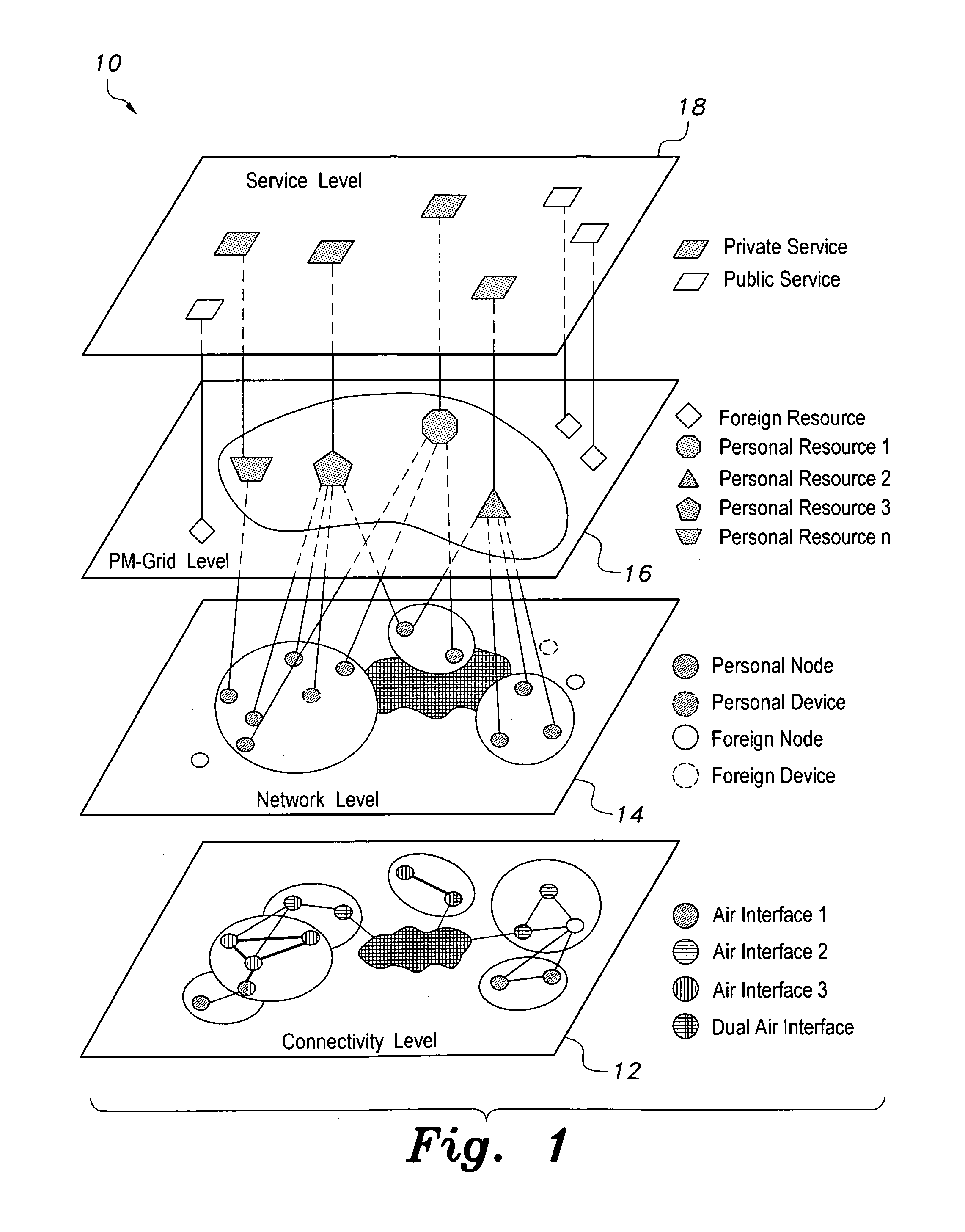Method of forming a personal mobile grid system and resource scheduling thereon
- Summary
- Abstract
- Description
- Claims
- Application Information
AI Technical Summary
Benefits of technology
Problems solved by technology
Method used
Image
Examples
Embodiment Construction
[0064]The method of forming a personal mobile grid system and resource scheduling thereon provides for the formation of personal area networks, personal networks and the like with network grid functionality superimposed thereon, allowing for the network sharing of resources such as processor cycles and memories. The personal mobile grid system is a grid computer environment that can be owned and utilized by an individual user. The grid system is constructed over the user's networked devices and may further be extended to other devices that the user trusts. The personal mobile grid system enables the mobility of users requesting access to grid resources, as well as resources that are part of the grid.
[0065]In contrast to conventional grid systems, the personal mobile grid is primarily constructed, owned and utilized by an individual user (or a group of individual users with a mutual trust relationship). Traditional grid networks are constructed, owned and utilized by organizations an...
PUM
 Login to View More
Login to View More Abstract
Description
Claims
Application Information
 Login to View More
Login to View More - R&D
- Intellectual Property
- Life Sciences
- Materials
- Tech Scout
- Unparalleled Data Quality
- Higher Quality Content
- 60% Fewer Hallucinations
Browse by: Latest US Patents, China's latest patents, Technical Efficacy Thesaurus, Application Domain, Technology Topic, Popular Technical Reports.
© 2025 PatSnap. All rights reserved.Legal|Privacy policy|Modern Slavery Act Transparency Statement|Sitemap|About US| Contact US: help@patsnap.com



